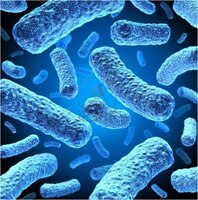70839 Sigma-AldrichOrigami™ B(DE3)pLysS Competent Cells - Novagen
Origami B host strain derived from a lacZY mutant of BL21 to enable precise control of expression levels using IPTG. T7 lysozyme expression suppresses basal T7 expression.
More>> Origami B host strain derived from a lacZY mutant of BL21 to enable precise control of expression levels using IPTG. T7 lysozyme expression suppresses basal T7 expression. Less<<Recommended Products
Overview
| Replacement Information |
|---|
Products
| Catalogue Number | Packaging | Qty/Pack | |
|---|---|---|---|
| 70839-3CN | 塑膠安瓿;塑膠針藥瓶 | 0.4 ml | |
| 70839-4CN | 玻璃瓶 | 1 ml |
| Description | |
|---|---|
| Overview | Origami™ B host strains carry the same mutations
in trxB and gor as the original Origami strains,
except that they are derived from a lacZY mutant
of BL21 to enable precise control of expression
levels by adjusting the concentration of IPTG.
Thus the Origami B strains combine the desirable
characteristics of BL21, Tuner™, and Origami
strains in one strain background. The mutations
in trxB and gor are selectable on kanamycin and
tetracycline, respectively; therefore, these strains
cannot be used with plasmids that can only
selected with kanamycin or tetracycline. These
strains also include the lon and ompT deficiences
of BL21, which increase protein stability.
DE3 indicates that the host is a lysogen of λDE3, and therefore carries a chromosomal copy of the T7 RNA polymerase gene under control of the lacUV5 promoter. Such strains are suitable for production of protein from target genes cloned in pET vectors by induction with IPTG. pLysS strains express T7 lysozyme, which further suppresses basal expression of T7 RNA polymerase prior to induction, thus stabilizing pET recombinants encoding target proteins that affect cell growth and viability. |
| Genotype: F- ompT hsdSB(rB- mB-) gal dcm lacY1 ahpC (DE3) gor522::
Tn10 trxB pLysS (CamR, KanR, TetR)
This product contains genetically modified organisms (GMO). Within the EU GMOs are regulated by Directives 2001/18/EC and 2009/41/EC of the European Parliament and of the Council and their national implementation in the member States respectively. This legislation obliges MilliporeSigma to request certain information about you and the establishment where the GMOs are being handled. Click here for Enduser Declaration (EUD) Form. This product is sold for internal research use only. Any commercial use of this product, its components, and/or any derivatives thereof (including but not limited to proteins produced using the product or its components) (together and hereinafter the 'EMD Product') requires signature of a written commercial use agreement with EMD Millipore Corporation or its successor-in-interest. Commercial use shall include but not be limited to: (1) use of the EMD Product to manufacture products for sale to third parties; (2) use of the EMD Product to provide services, information, or data to third parties in exchange for consideration; (3) use of the EMD Product for therapeutic, diagnostic or prophylactic purposes (including as part of a device, chip, assay or other product); or (4) resale of the EMD Product, whether or not such EMD Product is resold for research use. Nothing contained herein shall be deemed to represent or warrant that additional third party rights are not required for use of the EMD Product. Please direct any questions on these use restrictions to: licensing@milliporesigma.com. |
|
| Catalogue Number | 70839 |
| Brand Family | Novagen® |
| References |
|---|
| Product Information | |
|---|---|
| Components | |
| Guaranteed efficiency | Guaranteed efficiency: > 2 x 10⁶ cfu/μg |
| Quality Level | MQ100 |
| Applications |
|---|
| Biological Information |
|---|
| Physicochemical Information |
|---|
| Dimensions |
|---|
| Materials Information |
|---|
| Toxicological Information |
|---|
| Safety Information according to GHS |
|---|
| Safety Information |
|---|
| Product Usage Statements |
|---|
| Storage and Shipping Information | |
|---|---|
| Ship Code | Dry Ice Only |
| Toxicity | Multiple Toxicity Values, refer to MSDS |
| Storage | ≤ -70°C |
| Do not freeze | Ok to freeze |
| Packaging Information |
|---|
| Transport Information |
|---|
| Supplemental Information |
|---|
| Specifications |
|---|
| Global Trade Item Number | |
|---|---|
| Catalogue Number | GTIN |
| 70839-3CN | 07790788052836 |
| 70839-4CN | 07790788052843 |
Documentation
Origami™ B(DE3)pLysS Competent Cells - Novagen Certificates of Analysis
| Title | Lot Number |
|---|---|
| 70839 |
Brochure
| Title |
|---|
| Competent Cell Brochure |
Citations
| Title | |
|---|---|
|
|
User Protocols
| Title |
|---|
| TB009 Competent Cells |
| TB053 Academic and Non-profit Laboratory Assurance Letter |







